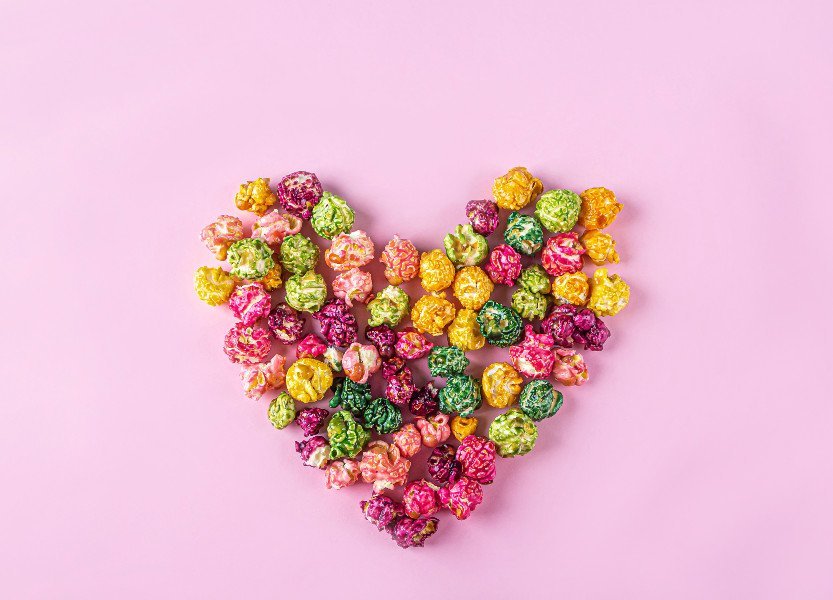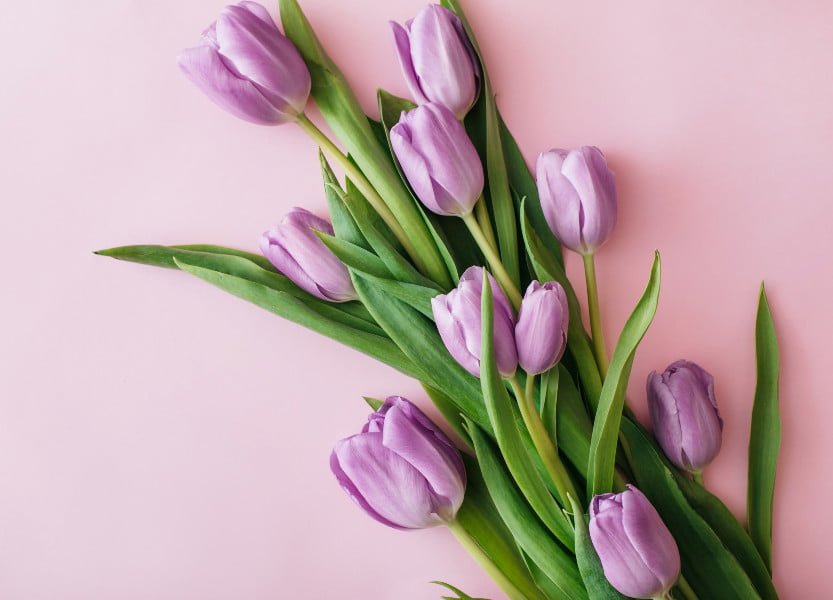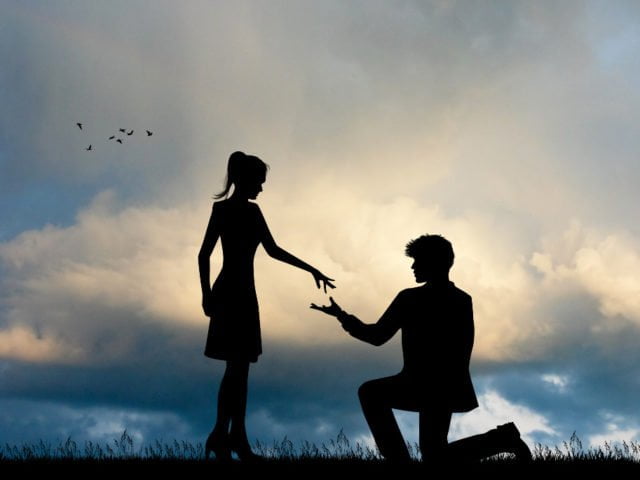If you love reading romance novels then you can’t avoid a romantic trope.
It’s that part in the book when the two work colleagues who hate one another suddenly find themselves trapped in a lift together (forced proximity!). Or when two strangers brush fingers picking up the same fallen item (sexual tension!). Or when the heroine faints and the strong, silent type catches her (alpha hero!). In other words, the scene that makes you squeal ‘yesss, I knew it!’
In this article, we’re going to look at what a trope is, romance novel sub-genres, and managing reader expectations. Plus we’ll also take a closer look at twenty of the most popular tropes and think about how to keep them fresh.
What Is A Trope?
A story trope, whether found in literature or films, is a totally expected situation between two characters that moves the action forward.
Tropes can be found in almost any genre (from fantasy to historical fiction) – but it’s the romance genre that’s famed for providing the most sought-after scenarios.
Different Romance Genres
If you’re considering writing your own love story, one of the first things you must decide is what sub-genre to choose from. In any love story, readers expect the main storyline to have two (or more) people falling in love and living happily ever after by the end.
Although, the time in which the book is set, the setting, and the characters themselves also determine the book’s sub-genre.
Let’s look closely at each sub-genre and how they’re defined:
Historical: This is when a book is set during a period previous to the current-day (yes, even the 1990’s count as historical. Sorry, I don’t make the rules).
The Duke and I (Julia Quinn)
Fantasy: When the setting is set in a different world to ours (this includes sci-fi, dystopia, and paranormal romance).
The Princess Bride (S. Morgenstern)
Rom-com: A romantic comedy is when the characters must face a series of amusing events before they finally get together.
The Flatshare (Beth O’Leary)
Christmas: This is a relatively new category, but festive books have become so popular with readers lately that they have become a genre of their own.
One Day in December (Josie Silver)
Erotic: This is a love story where the plot revolves around the sex and not the other way around. It can include BDSM, kink, LGBT characters, and many of its own sub-genres.
Fifty Shades of Grey (E. L. James)
Young Adult: Romance books written for teenagers, often depicting first love and all the drama that can happen when two young people fall in love.
The Sun Is Also A Star (Nicola Yoon)
Religious/Spiritual: This category often includes Christian fiction, or ‘clean’ fiction (ie very little sexual tension and no on-page sex), but can also include characters spiritually finding themselves…as well as one another.
Eat, Pray, Love (Elizabeth Gilbert)
LGBTQ: Any romance novels depicting love between anyone who doesn’t define themselves as straight. This can be combined with any of the above categories too, of course.
Tipping the Velvet (Sarah Waters)
Romance stories don’t need to fit neatly into just one category, many fall into various sub-genres. For instance, Outlander (Diana Gabaldon) is a steamy, fantasy and historical romance. Whereas Red, White and Royal Blue (Casey McQuiston) is an LGBTQ rom-com YA novel, with the US president’s son falling in love with a British prince.
Why Do Tropes Matter To Romance Readers?
It doesn’t matter what particular trope features in a love story, the most popular romance tropes are the ones that bring a couple together and create tension and pace in the story.
With each trope, a writer is pushing their characters together then ripping them apart again. This not only builds attraction and tension between the protagonists, but it heightens the stakes and keeps readers hooked.
My one aim as a romance novelist (I’ve written both paranormal romance and fantasy romance novels) is to keep my readers on the edge of their seats, wondering whether the main characters will get together – then making sure that by the end they do. That’s all romance readers want; the pain and suffering of impossible love, followed by the sweet joy that love won after all.
A happy ending gives us all hope. It makes us believe that we too can find love. It makes the world seem like a nicer place. This is what romance readers expect. Don’t let them down!

Top 20 Most Powerful Romance Tropes
As Shakespeare once wrote, ‘the course of true love never did run smooth.’ Which is why every romance writer ensures that their main character has to fight as hard as possible (be it an internal struggle or a literal battle with external forces) to be with their one true love.
Soul mates who are destined to be together, suffer together – and the most entertaining way of ensuring that is to throw in a few tried and tested tropes to keep the pace and tension going.
Here are my favourite twenty romance tropes, including examples from both books and movies:
1. The Cute Meet-Cute
A meet-cute is when two lovers first meet. This needs to be memorable, and preferably it also needs to be cute. A classic example is one of them humiliating themselves in front of the other, or something happening that instantly turns them into enemies. Or you can be original and have a one night stand be the beginning of their love story, then make the couple work hard to turn instant attraction into true love.
2. Enemies to lovers
There’s a thin line between love and hate, which is why the Enemies to Lovers is one of the most popular tropes. Demonstrating bristling tension between your protagonists, and then showing readers how those initial feelings change over the course of the book, can create conflict, tension and a lot of romantic angst.
For example, everyone loves a bad boy, but it’s a lot more fun if the heroine falls for him after a long time of thinking that she hated him. Or perhaps, such as in a workplace romance, she’s the mean boss and he’s the nice guy who can’t stand her. So many scenarios are available!
3. Forced Proximity
Nothing gets my heart soaring as much as a scene in a book where the enemies to lovers couple book into a hotel and…THERE’S ONLY ONE BED! Sarah J Mass does this beautifully in A Court of Mist and Fury. Or (I love this one) two people who have been refusing to acknowledge their feelings for one another have to quickly hide and find themselves locked IN A SMALL BROOM CUPBOARD!
Excuse my basic tastes here, but this is the classic example of creating a physical and emotional connection between two characters who have allowed their heads to rule their hearts (and lower regions). But once they’re touching, once their lips are inches apart, they can’t fight it any longer. Swoon!
4. Destiny
This may seem like a lazy trope but it’s a classic. When two characters are thrown together by fate, who are they to argue? Star crossed lovers trying to live out their destiny? Yes, please!
In my own book, The Path Keeper (N J Simmonds), Zac has been in love with Ella for over 2,000 years and hundreds of lifetimes. It’s his fate to love her, yet in this lifetime she loves him back. The only problem is that he’s an angel (don’t you just hate it when that happens?).
5. Childhood sweethearts
This romance trope is a favourite with YA books and less-steamy romance novels. No one forgets their first crush, or the potency and drama of first love, and it’s this friends to lovers theme that makes the ‘we are best friends, but now we’re going to ruin everything for love’ storyline so compelling. Look at Elle in The Kissing Booth, she’s about to ruin her friendship with her male friend, Lee, because she’s fallen in love with his alpha brother, Noah (also her friend). What could possibly go wrong?
6. Forbidden Love
From Romeo and Juliet, to Twilight, as soon as you tell someone (OK, a teenage girl in a lot of these cases) that she can’t have someone – that certain someone becomes ten times more desirable. A forbidden love interest is key to this trope, and it’s that one obstacle that will keep them apart and keep raising the stakes (excuse the vampire pun). And what happens when they finally do get together? Well, as Juliet and Bella will tell you, it’s not pretty.
7. Impossible Love
There’s a fine line between impossible love and forbidden love. In forbidden love, the obstacles are normally societal or human (ie he’s a prince and she’s an ordinary person, or she’s a Capulet and he’s a Montague). But with impossible love, the obstacle can be something a lot more esoteric.
In the aptly-named rom-com novel, Impossible (Sarah Lots), a couple fall in love over email – then discover they are in two different parallel universes! How on Earth are they ever going to find one another?
8. Second Chance Love
Can someone find happiness a second time around? Whether their first blind date went badly and she’s giving him a second chance, or (like in Nicholas Sparks’ The Notebook) they fell in love, separated for seven years, and then couldn’t keep away from one another, second chances are the biggest ‘will they, won’t they’ risk.
Another version of this is when a recently widowed or divorced character no longer trusts love…but they’ve just met their perfect match. We believe in their love, but do they?
9. I Have A Secret
Every story needs a surprise, and every character needs a secret. Whether they’re hiding the news of a secret baby (like in Helen Fielding’s Bridget Jones’ Baby where we don’t know who the father really is) or whether they’re pretending to be someone they’re not (like Casanova who doesn’t reveal his true identity until the end of the film) it’s the suspense that draws readers – whether they’re in on the secret or not!
10. The Bet
This trope is where someone (usually an alpha hero) places a bet that he can get the unobtainable/prissy/ugly duckling girl. Then he falls for her – but not before she finds out, loses trust in him, and ironically breaks his heart in return. This trope was used widely in the 90s (think movies like Clueless, 10 Things I Hate About You, and She’s All That) but, thankfully, with the rise of feminism in storytelling, it’s now often presented in a less misogynistic way.

11. Fake Relationship
This is one of my favourite tropes, not because it’s original but because I enjoy seeing what will happen to the couple to make them realise that they’re not faking their love after all! Whether they’re involved in a marriage of convenience/arranged marriage, or it’s simply a fake relationship in high school (such as the one in To all the boys I loved before by Jenny Han), the fun part is watching them realise what we, the readers, spotted from the very beginning.
12. Love Triangle
Love triangles are corny and a little tired, but if written originally they can still add a lot of tension to love stories. In Outlander, for instance, the heroine is torn between loving her husband in 1945 and her lover in 1743 (now there’s a quandary).
13. Opposites Attract
I do love a sunshine and grump couple. There’s nothing more appealing than when two completely different people, who would normally have nothing in common, become foil characters because their opposite attributes are exactly what the other needs. This trope can be made even more entertaining if you choose a difficult setting, such as marooning them on a desert island or situating them in the middle of the jungle. I especially love the ‘high flying woman and rough and ready guy’ combo in the movies Crocodile Dundee or Romancing The Stone (and the recent modern twist to these movies, The Lost City).
14. Amnesia/Mistaken Identity
In the 1987 rom-com movie Overboard (and the less amusing, gender-swapped remake of 2018) a rich woman on a yacht is rude to her handyman (opposites attract) and she refuses to pay him. When she falls overboard and loses her memory, as revenge he convinces her she’s the mother of his children and makes her pay him back in hard labour. But it all backfires when…surprise surprise…he falls madly in love with her. But what if she finds out what he did?
Highly immoral, yes, but also highly entertaining.
15. Instalove
This trope gets a lot of bad press, but personally, I want to see an instant something between soul mates in the book I’m reading. I don’t care if that initial reaction is curiosity, desire, lust, friendship – no matter what people say, when you meet someone you want to have a relationship with there is often a spark. A pull. An ‘oh no, I’m not going to be able to fight this’ longing. And that instalove, the one the couple keep trying to ignore, is what makes the belated love epiphany at the end so much sweeter!
16. Fish Out Of Water
This one is a lot of fun and works well in romcoms and YA. It is also perfectly paired with Opposites Attract and Enemies to Lovers (for the single reason that if you aren’t familiar with your surroundings, the chances are the people there will be very different to you). One example is the series Virgin River (Robyn Carr). She’s a strong-headed medical professional from the big city, he’s a homely bar owner from a small close-knit town. She’s widowed (Second Chance trope) and he has a shady past. Can they make it work? Of course they can (eventually)!
17. Stuck Together
This trope is the perfect mix of the Forced Proximity and Enemies to Lovers tropes – but with the added tension of the fact that they can’t escape one another. In The Hating Game (Sally Thorne), work colleagues are forced to share an office and find themselves competing for the same job. They’re rivals, they hate one another, neither of them will give up…but then love gets in the way.
18. Just Friends
Friends to Lovers is one of the most popular tropes because, well, who hasn’t once had a crush on a friend? In the 2011 movie, Friends With Benefits, two friends who get on really well decide that instead of bothering with a romantic relationship – and all the stress that brings – they will keep things purely physical. Surely they can be just friends…with benefits…and not fall in love, right? Wrong.
19. It Was Right In Front Of You All Along!
There’s nothing more romantic (albeit frustrating to watch) than a belated love epiphany, with the main character realising right at the last minute that the one they love was there all along. In the movie Yesterday, a struggling musician, Jack, one day discovers that everyone has forgotten who The Beatles are; which means he becomes famous by pretending to write some of the world’s most popular songs. But while he’s sucked into his newfound stardom he doesn’t realise that Ellie, his best friend, is the true love of his life.
20. And The Biggest, Most Important One? Happily Ever After.
If your story doesn’t end with a happy ending, then it’s not a romance. I’m not saying you can’t make us cry at the end (Me Before You, One Day, The Songs of Us), and I’m not saying the couple has to get together, but at least leave us believing that true love really does exist.
So whether you have your protagonists kissing in the rain, riding off into the sunset, or realising they love their best friend, just make sure you give your what they readers expect – lots of love!
Trope Vs Trite
As we’ve seen, tropes can be predictable and formulaic. If we settle down to watch a romantic movie we want three things:
- A believable scenario (female heroine returning to her small town).
- Things bringing the couple together then ripping them apart (misunderstandings, love triangles, bad boys making bad decisions, unrequited love, a bride getting cold feet).
- And then it all being resolved by Act 3 and the two of them living happily ever after.
It’s OK to put all these things in your book, in fact, it’s vital – readers love this – but it’s how you introduce a romantic trope that matters. That’s the part people will remember and how you set your book apart from all the other stories.
So how can you achieve that?
How To Make Romance Tropes Feel New
How do you write a unique story, but include lots of well-loved romantic tropes? Here are three ways…
Unexpected Outcome
Surprise your readers. Instead of a girl not being able to choose between two boys, why not make the relationship polyamorous, feature bisexual characters, or involve a thrupple?
Change The Setting
Maybe you want to write the next Romeo and Juliet… but what if it’s set in a dystopian world? With aliens?
Mix Up The Genres
In The Hunger Games, Suzanne Collins introduces a love triangle between Katniss, Peeta and Gale. The difference is that this book isn’t a love story, it’s a dystopian YA series with a David And Goliath trope. Yet it still works.
And They All Lived Happily Ever After…
I hope you found this article as entertaining to read as I found it to write!
Adding romantic tropes to your novel can make all the difference, just make sure you keep it fresh and keep those readers guessing (and swooning).
Jericho Writers is a global membership group for writers, providing everything you need to get published. Keep up with our news, membership offers, and updates by signing up to our newsletter. For more writing articles, take a look at our blog page.











